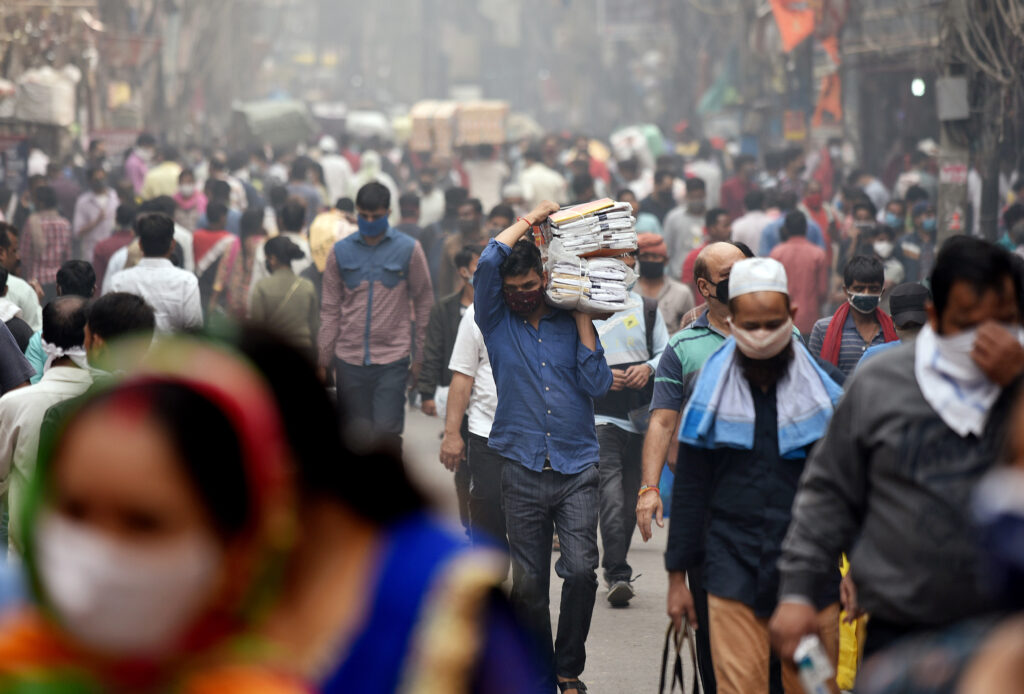
The second wave of Covid-19 infections in India peaked on May 9, 2021. The seven-day moving average has dropped to 85,807 cases from a high of 391,819 daily cases. The importance of being well-prepared for the third wave has been highlighted by India’s experience with a severe second wave of infections, which overwhelmed the country’s health-care infrastructure. The rate of vaccinations will, of course, be the most important factor in determining whether a nationwide third wave occurs. There are four things that must be done in addition to vaccinations to reduce the impact of a third wave of Covid-19 infections.
1. Expansion of testing facilities is required.
The key to containing Covid-19 infections is timely testing and isolation of infected patients. Access to testing facilities determines whether or not people are tested in a timely manner. If the testing center is one kilometer away from their home, a symptomatic person is more likely to get a test than if it is 20 kilometers away. Paid and free (at government facilities) tests are likely to make a difference, particularly for the poor.
According to the Indian Council of Medical Research’s (ICMR) Covid-19 Sample Collection Management System, testing facilities in states like Bihar and Uttar Pradesh are extremely skewed. According to the data, the median number of sample collection centers (including mobile units) in districts in states like Karnataka and Gujarat was 90 and 68, respectively, as of June 12. In states like Bihar and Uttar Pradesh, this number was only two. It’s important to remember that these are median figures, which means that half of the districts will have fewer sample collection centers.
2. It is necessary to encourage people, particularly the poor, to seek medical advice.
To be sure, expanding testing centers will only address a portion of the issue. The National Statistical Office’s (NSO) 2017-18 health consumption survey demonstrates why. In India, whether or not people seek medical help when they are ill is determined by their financial situation. According to Monthly Per Capita Consumption Expenditure (MPCE), the poorest 20% of people are nearly three times more likely than the richest 20% not to seek medical advice. The poor are more likely than the wealthy to avoid seeking medical advice due to a lack of nearby health facilities and affordability.
3.Recognize the financial impact of Covid-19 hospitalizations.
There is no accurate estimate of the cost of health care due to Covid-19 infections. The NSO survey can be used to estimate the impact of the health-care spending shock on household finances. According to the report, family income or savings covered 81 percent of hospitalization costs (excluding childbirth); borrowing covered 11 percent of costs; 3.5 percent of costs were covered by contributions from friends and relatives; and 0.4 percent required the sale of physical assets.
4.Increasing the coverage of health insurance will be beneficial.
According to the 2017-18 NSO survey, over three-quarters of hospitalization cases in India involved individuals who were not covered by health insurance. The share of hospitalization cases not covered by any kind of insurance rises from 68 percent among the richest 20% to 85.5 percent among the poorest 20% as income rises. Even when health insurance was available, it did not cover the entire cost of treatment.
According to the NSO survey, health insurance covered only 10.2 percent of medical costs and 9.1 percent of total costs (which includes the cost of transporting the patient as well as the cost of food, lodging, transportation, and other household expenses) in cases where hospitalization was required.





